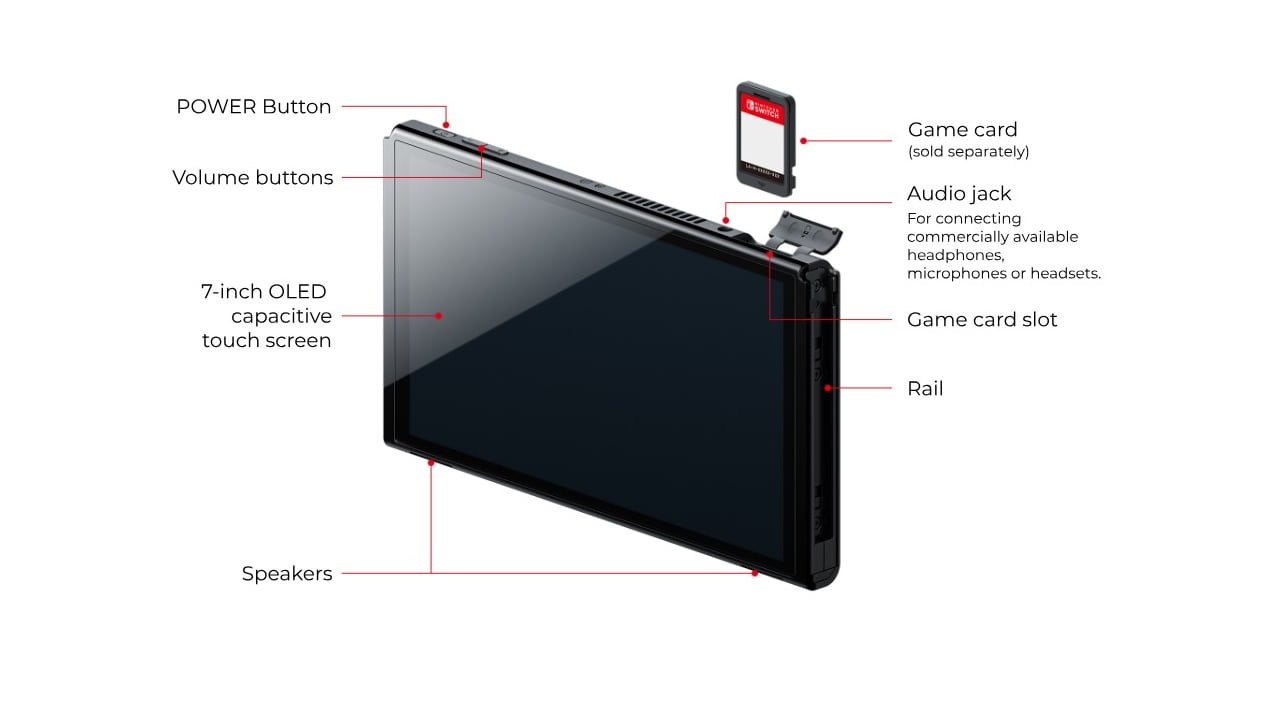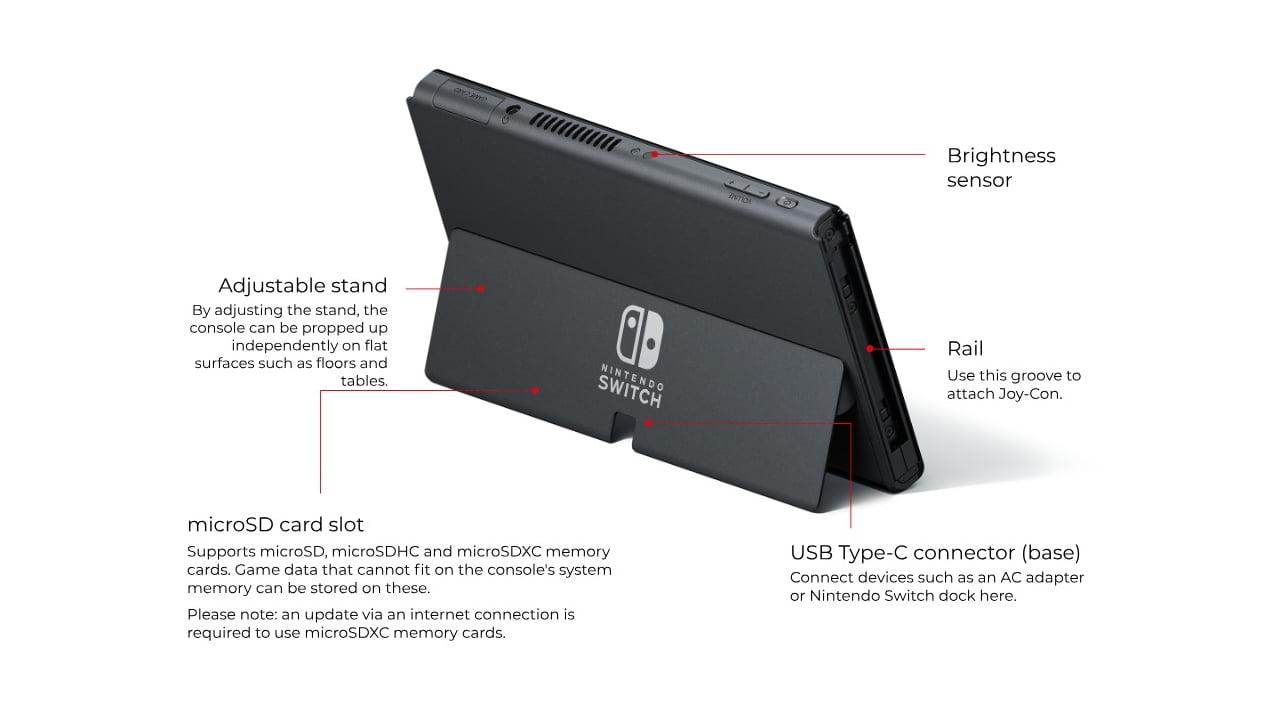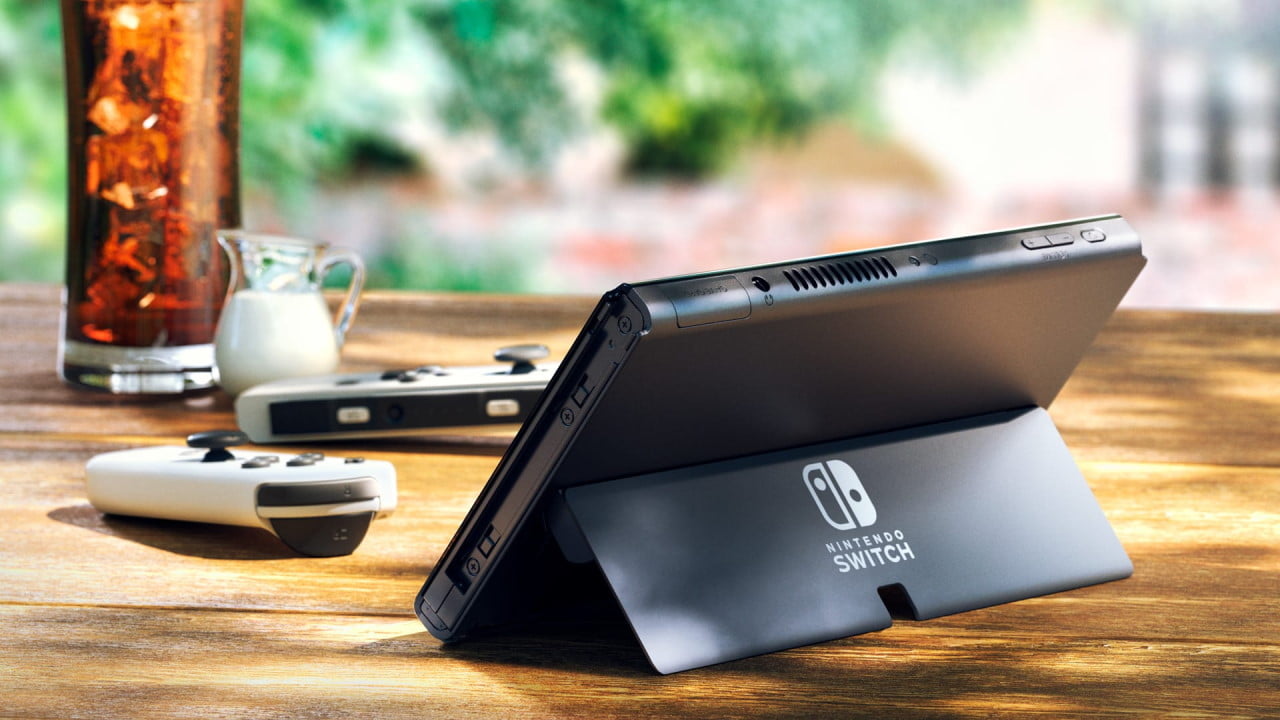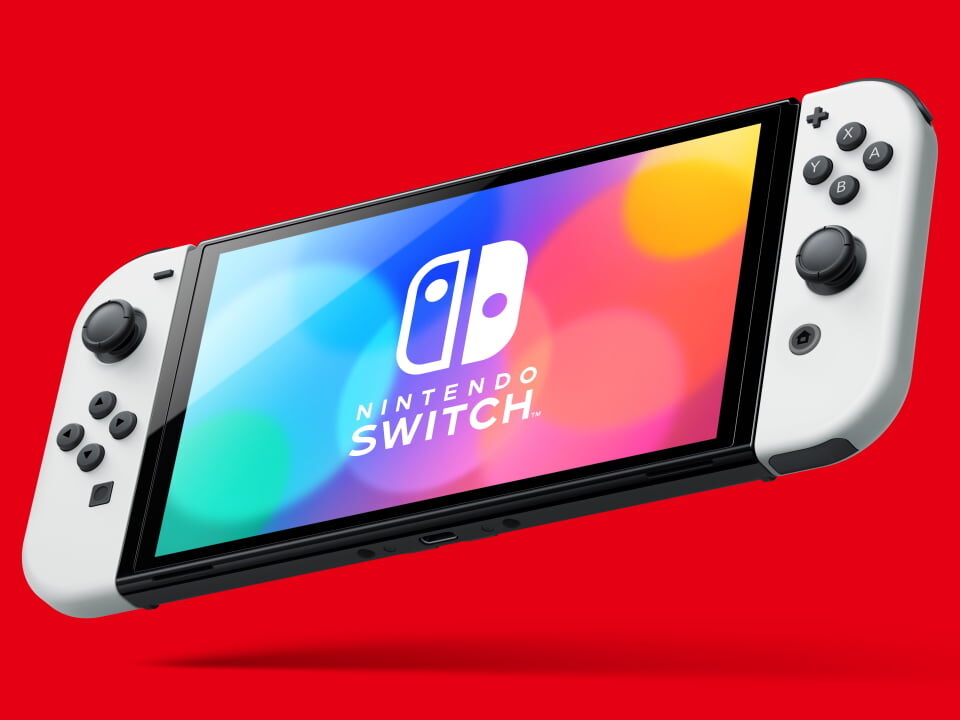Our big guide to the difference between the Nintendo Switch OLED Model and the original Nintendo Switch.
Nintendo has announced the Nintendo Switch OLED Model. Is it the Nintendo Switch Pro people had in mind?
Probably not.
It doesn’t feature a 1080p screen on the handheld, for one thing, or 4K output via the dock. Nor does it feature new silicon or increased RAM under the hood; it’s still the same custom Nvidia Tegra APU (that’s a CPU and GPU combined) with 4 GB RAM.
That’s not to say the Tegra part hasn’t been incrementally improved over the years, during manufacture or with firmware updates – the Nintendo Switch now boasts a better battery life than the early-generation units, for instance – but it’s not going to be any more capable of competing with other consoles in terms of horsepower.
No, the headline item of the new Nintendo Switch Pro is right there in the title: it’s that lovely OLED screen.
OLED, if you’re not au fait with telly technology, means an LED screen without a shared backlight. Instead, individual pixels are lit as required by the image on display. This means better contrast, far superior blacks and dark scenes, and generally just a better image quality overall.
(Yes, that is the same sort of screen featured in the PS Vita back in 2011. That handheld was always ahead of its time.)
So it’s not a Nintendo Switch Pro, but it is better than the original Nintendo Switch in a few key areas. Which ones? Let’s get on to the comparison.


Nintendo Switch OLED Model vs Nintendo Switch original
Size
- Nintendo Switch original: 102mm x 239mm x 13.9mm (with Joy-Con attached; 28.4mm at thickest point)
- Nintendo Switch OLED Model: 102mm x 242mm x 13.9mm (Joy-Con permanently attached; 28.4mm at thickest point)
- Takeaway: Nintendo Switch OLED Model fractionally larger (note: might impact compatibility with some Labo kits?)
Weight
- Nintendo Switch original: approx. 400g (with Joy-Con attached)
- Nintendo Switch OLED Model: approx. 420g (with Joy-Con attached)
- Takeaway: Nintendo Switch OLED Model 5% heavier
Screen
- Nintendo Switch original: 6.2″ capacitive touch screen, 720p resolution (236.87 PPI)
- Nintendo Switch OLED Model: 7″ capacitive OLED touch screen, 720p resolution (209.8 PPI)
- Takeaway: Nintendo Switch OLED Screen is 12.9% larger (and this increased size will lead to reduced pixel density, but expect this to be compensated for by the superior brightness and contrast of that OLED screen)
CPU/GPU
- Nintendo Switch original: Custom Nvidia Tegra
- Nintendo Switch OLED Model: Custom Nvidia Tegra
- Takeaway: Identical (though it’s possible Nvidia may have made incremental improvements to the Tegra chip since the original Switch’s release)
System memory
- Nintendo Switch original: 32 GB
- Nintendo Switch OLED Model: 64 GB
- Takeaway: The Nintendo Switch OLED Model has twice as much internal storage
Communications
- Nintendo Switch original: Wireless LAN (IEEE 802.11 a/b/g/n/ac compliant) / Bluetooth 4.1 / NFC
- Nintendo Switch OLED Model: Wireless LAN (IEEE 802.11 a/b/g/n/ac compliant) / Bluetooth 4.1 / NFC / Wired ethernet via upgraded dock
- Takeaway: The Nintendo Switch OLED Model now has a welcome ethernet jack in its dock for wired connectivity (but is otherwise identical for connectivity)
Video output
- Nintendo Switch original: Maximum resolution: 1920×1080, 60 fps (via Switch Dock/HDMI cable)
- Nintendo Switch OLED Model: Maximum resolution: 1920×1080, 60 fps (via Switch Dock/HDMI cable)
- Takeaway: Identical
Audio output
- Nintendo Switch original: Supports linear PCM 5.1ch sound (via Switch Dock/HDMI cable)
- Nintendo Switch OLED Model: Supports linear PCM 5.1ch sound (via Switch Dock/HDMI cable)
- Takeaway: Identical
Speakers
- Nintendo Switch original: Stereo speakers
- Nintendo Switch OLED Model: Stereo speakers with “enhanced audio”
- Takeaway: We don’t know what’s “enhanced” about the Nintendo Switch OLED Model’s speakers, but they’re better than the original’s, apparently
USB connectivity
- Nintendo Switch original: USB Type-C terminal (used for charging or for connecting to the Nintendo Switch dock)
- Nintendo Switch OLED Model: USB Type-C terminal (used for charging or for connecting to the Nintendo Switch dock)
- Takeaway: Identical
Headphone jack
- Nintendo Switch original: Stereo output
- Nintendo Switch OLED Model: Stereo output
- Takeaway: Identical
Expansion slots
- Nintendo Switch original: Nintendo Switch GameCard slot / microSD, microSDHC and microSDXC memory card slot
- Nintendo Switch OLED Model: Nintendo Switch GameCard slot / microSD, microSDHC and microSDXC memory card slot
- Takeaway: Identical
Sensors
- Nintendo Switch original: Gyroscope, accelerometer, brightness sensor
- Nintendo Switch OLED Model: Gyroscope, accelerometer, brightness sensor
- Takeaway: Identical
Internal battery
- Nintendo Switch original: Lithium-ion battery, battery capacity 4310mAh
- Nintendo Switch OLED Model: Lithium-ion battery, battery capacity 4310mAh
- Takeaway: Identical
Battery life
- Nintendo Switch original: Breath of the Wild can be played for three hours on a single charge
- Nintendo Switch OLED Model: Breath of the Wild can be played for five-and-a-half hours on a single charge
- Takeaway: The Nintendo Switch OLED Model’s battery life is 50% better than the original Nintendo Switch (note: OG Nintendo Switch hardware produced since mid-2019 has a similarly improved battery life)
Controllers
- Nintendo Switch original: Detachable Joy-Con controllers with HD Rumble and IR blaster
- Nintendo Switch OLED Model: Detachable Joy-Con controllers with HD Rumble and IR blaster
- Takeaway: Identical
Other things of note
- The Nintendo Switch OLED Model replaces the original console’s flimsy leg with a much wider kickstand – this will make it more stable and appears to be more adjustable for angle
- The logo on the front of the Nintendo Switch OLED Model’s dock appears to glow white – it was just a different tone of grey plastic on the original dock (though the consoles can use one another’s docks so… would an original Switch cause the OLED Model’s dock to light up…?)
- It also comes in an attractive white colour, in addition to the grey/neon we’re familiar with
- It doesn’t use the (superior) D-pad design of the Nintendo Switch Lite, sticking with the separate button design of the original, for some reason
So the key takeaways here are that larger OLED screen, double the internal storage, wired ethernet on the dock (and a light-up logo), speakers with “enhanced” sound, and that wider, sturdier kickstand.
Some of those benefits will be beneficial to specific subsets of players. Where things like improved storage and nicer speakers are nice-to-haves, the wired ethernet will be of critical performance to people taking online play seriously, for instance.

The real game-changers in the Nintendo Switch OLED Model, though? That crisp, bright OLED screen is lovely, obviously, but the kickstand finally looks fit for purpose.
Those two things combined will make it possible to play Mario Kart 8 Deluxe outdoors on a sunny day!
Read how the Nintendo Switch Lite stacks up against the original model.
Follow Thumbsticks on Facebook and Twitter for more useful video game stuff.






